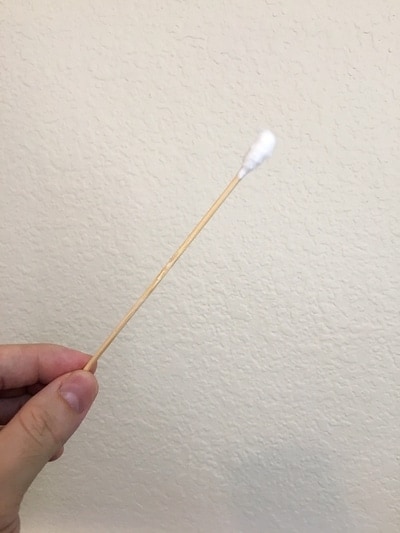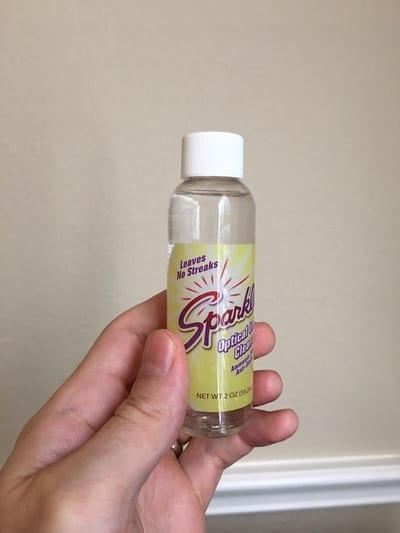As with all precision machinery, microscopes work best when they receive regular cleaning and maintenance. An important part of this is cleaning the objective lens. Since microscopes are so delicate, what special steps must be taken to do this cleaning properly?
To clean a microscope objective, you need to invest in the proper cleaning supplies, do an initial cleaning for dust and other solid debris, and use a cleaning solution to remove more stubborn contaminants. Never use tissues, newspaper, or paper towels for cleaning. Instead, use special lens paper.
Throughout this article, you’ll learn more about properly cleaning a microscope objective, including which materials to use and the proper techniques for different types of objective lenses. For more information on objective lenses see this post.
Invest in Proper Objective Cleaning Supplies
Microscopes can be pretty expensive, so it’s important to make sure you’re using the right equipment to clean them. Using the wrong products can damage the objective beyond repair, which can lead to a costly replacement. Here’s what you’ll need to have in your cleaning kit:
- Lens Paper: You should never clean an objective lens with normal tissues. Instead, look for tissues specifically marked as a lens cleaning tissue or lens paper. While they may seem like a good option, do not use Kimwipes. These are not the same as lens papers, as explained by Portland Community College’s Lab Department, and can damage the lens.

- Cotton Swabs: While Q-tips aren’t recommended, you can easily make your own cotton swabs by wrapping high purity cotton around stiff wooden sticks. You can easily find bamboo options at Chinese restaurant suppliers.

- Air Puffer: Also known as a dust or air blower, these can be found at lab supply stores and pharmacies. These are not to be confused with cleaning dusters as mentioned below. You can snag some of these air puffers at most office supply stores or on Amazon.

- Brush: If you’d rather use a brush than an air buffer, look for an extra soft camel hair option.
- Cleaning Solution: Many lens cleaning solutions are available online, including this highly rated AmScope Sparkle Optical Lens Cleaner from Amazon. The flip lid makes it simple to drop in just the right amount of solution. If you’d rather make your own at home, you can do so easily by combining 5-10 drops of dishwashing liquid and 10 mL of distilled water.

Of course, make sure to check the manufacturer’s recommendations for cleaning before purchasing any of these products.
Wash Your Hands Before Handling The Objective
This might seem like an obvious step, but it’s important to make sure that you’re handling all microscope equipment with clean hands. You shouldn’t touch any lenses with your bare hands anyway, but it’s best practice not to introduce new contaminants during the cleaning process. Although it’s unnecessary, you can choose to wear gloves while cleaning the objective to minimize new fingerprints. Just make sure they’re powder-free.
Remove And Check The Objective

Even though microscope objectives should be cleaned on a regular basis, chances are you won’t think to do any maintenance until the image starts becoming blurred. A dirty objective likely causes this less-than-clear view. However, when working with such expensive and precise instruments, it’s important to discern exactly what kind of “dirty” you’re dealing with.
Harvard University’s Center for Biological Imaging explains the importance of recognizing different types of soiling on the objective, as this will affect how it is cleaned. Dust particles, pollen, and other solid forms of soiling can likely be brushed off without applying any solution.
Grease from fingerprints or dried oils from immersions, on the other hand, will require a little extra work to clean off. Start the inspection by carefully removing the objective and placing it on a clean, flat surface. See if you can spot any dirt, oil, or other debris by eye first.
Then look through the objective to see if it’s producing a clear, crisp image. To be even more thorough, remove the eyepiece from the microscope and look through it backward at the objective. This magnified view will give you a really good idea of what sort of soiling you’re working against.
Do An Initial Cleaning With Puffer Or Brush
Most experts recommend performing an initial cleaning without any sort of solvent to remove solid debris like dirt, dust, and skin cells. The best way to do this first cleaning is with a dust puffer or rubber blower. This will allow you to blow particles off of the objective without actually touching it and potentially leaving fingerprints or smudges. Make sure never to touch the tip of the blower to the objective.
Alternatively, The University of Texas Health Science Center at San Antonio suggests using a very soft brush to do this initial wipe of the objective. This brush must be incredibly soft as coarse bristles could scratch the glass. If you choose to use a brush, make sure to wipe gently and in one direction only.
While it’s fine to swap out a puffer for a soft brush, there are some substitutions you should never make. Although air is the best way to get solid soiling off the objective, refrain from:
- Blowing with your own mouth: Although it seems gentle, doing this can actually deposit saliva that could damage the lens, according to The University of Alaska Anchorage.
- Using canned air: It’s difficult to control not only the pressure at which air comes out of these cans but also the temperature. Very cold temperatures can permanently damage the objective. Accordingly, ZEISS Microscopy suggests this cleaning method be avoided.

Clean Water-Soluble Contaminants With Condensation
The next step in cleaning is to remove water-soluble contaminants or soiling that can be removed with water. To do this, breathe on the lens surface and wipe carefully with lens paper, making sure not to release any saliva. While blowing onto an objective is too rough, lightly breathing on the lens to create moisture is perfectly safe.
If the lens is concave, the normal cleaning process begins to differ here. Since this type of lens is shaped like a bowl, simply wiping won’t fully remove contaminants at the bottom of the curve. Instead of cleaning with lens paper, you’ll need to use a swab wrapped in cotton. After breathing onto the objective, Duke University suggests drawing the cotton swab in a spiral pattern. Moving the swab in a zigzag motion will only move dirt around, so make sure to follow a spiral.
Continue to use cotton swabs and a spiral cleaning pattern for the next cleaning steps when working with concave objectives.
Overlay Objective With Lens Paper

Lay a square or sheet of clean lens paper directly on top of the objective. Do not press down or wipe with the paper on the dry lens; this can cause scratching. Take care not to touch the lens paper except where absolutely necessary. Holding onto the corner of the paper and lightly setting it down over the objective is highly suggested. This prevents any contaminants from your hand from transferring to the objective via the lens paper.
Drop Solution Onto Lens Paper
Using a dropper, drop one or two drops of cleaning solution onto the lens paper. There is no need to use more liquid than this, as flooding the lens won’t allow for a thorough, precise wipe. Make sure you’re using one of the cleaning solutions laid out in the first step of this article. If the solution’s bottle does not have a dropper, use a cotton swab to drip the solution slowly onto the paper.
Draw Lens Paper Across Objective
Touching only the edge of the lens paper you’ve been touching, slide the lens paper across the objective in one fluid motion. To repeat this process, use a new sheet of lens paper and additional drops of solution each time. Continue drawing the lens paper across the surface of the lens until it looks clear of contaminants. Never move the paper back and forth – simply drag it across the lens.
Repeat Cleaning With Methanol
If stubborn contaminants remain, you’ll want to repeat the cleaning process with a slightly stronger solution. I suggest methanol or acetone. Repeat the previous step but swap out the liquid for the stronger solvent. While this may also take a few passes with the lens paper, this should be enough to remove even the strongest of contaminants.
Dry The Objective With Lens Paper
According to Central Michigan University, you should never let an objective air-dry. Take a fresh sheet of lens paper and wipe any remaining liquid from the lens. Use the same single motion dragging method, as explained above, to ensure that no fibers are left behind. Once the objective is dry, carefully place back onto the microscope, taking care not to touch the lens with your fingers. If you have a microscope cover, put it on to keep dust away while it’s not in use.
Takeaways
Cleaning a microscope objective is a relatively easy but incredibly important process. With the right equipment and techniques, the entire process can be done properly in under 20 minutes. Taking the time to clean the objective regularly will ensure that future cleanings are even faster.
References
- Portland Community College: Care and Use of Microscopes
- Harvard University: The Clean Microscope
- The University of Texas Health Science Center at San Antonio: Proper Care and Cleaning of the Microscope
- The University of Alaska Anchorage: Microscope Rules
- ZEISS: Education in Microscopy and Digital Imaging
- Duke University: Clean and Objective
- Central Michigan University: Light Microscope Cleaning Procedure

